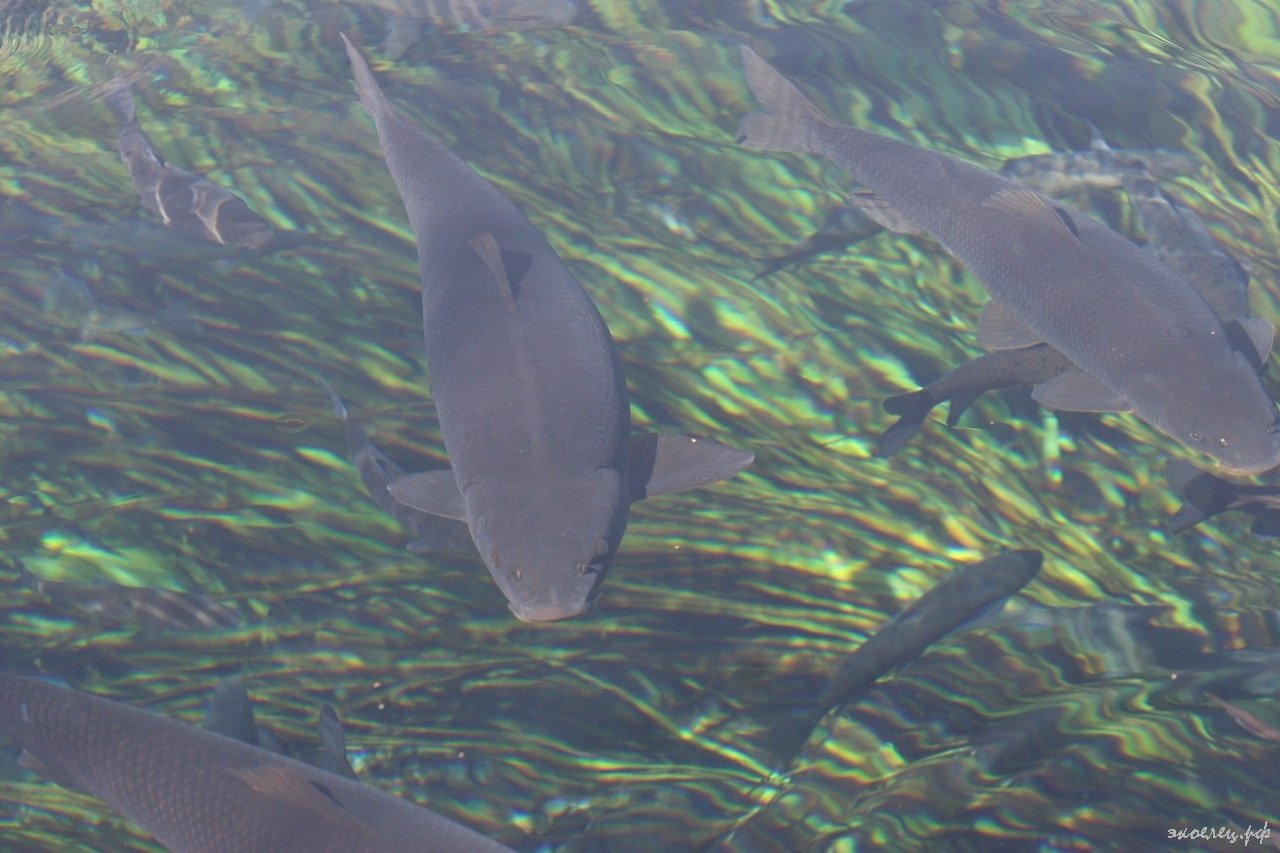The name of this place-CHILUCHORCHASHMA translates as "Forty-four springs". Every resident of Tajikistan and Uzbekistan knows about it.
Here, near the hill, in the very center of the sunny desert, several wide springs burst out of the ground, spreading into 39 smaller ones. All the springs, connecting into one, form a small river, the width of which is 12-13 meters. There are a lot of fish here.
There is a legend that Caliph Ali, noticing a dried-upriver called Romit, drove to Chiluchorchashma and began to pray to Allah that he would give at least a little water. At this time, he hit the ground near the hill, and in the place where his hand touched the soil, several transparent springs appeared.
Chiluchorchashma is visited annually by many tourists and pilgrims. People pray, perform ablutions, plunge into springs, make sacrifices. There is an opinion that the water in these springs can heal from diseases.
There is also a small elevation on which stands a low mausoleum. Inside is the body of a saint named Kambar Bobo. According to legend, he took care of the horses of Caliph Ali. In addition, several other saints are buried in this place, but no one knows their names.
 Availability: February - December
Availability: February - December Direction: Dushanbe-Bokhtar-Dusti-Shakhritus-
Direction: Dushanbe-Bokhtar-Dusti-Shakhritus- Duration: 1 day (12 hours)
Duration: 1 day (12 hours)  Type of tour: individual, calculation for 2 (2-4 people), for Solo (1 person) +50%
Type of tour: individual, calculation for 2 (2-4 people), for Solo (1 person) +50%08:30 - you will be picked up from the stayed hotel in Dushanbe and departure to Bokhtar / Dusty side
11:00 - arriving Dusti and visit Mausoleum of Hazrati Zayn al-Abidin and Beshai Palangon (tigr) Park
- Ali ibn Husayn was born on January 6, 658 in Medina. His father was Husayn ibn Ali— the grandson of the Prophet Muhammad, and his mother was the Persian princess Shahrbonu, the daughter of the last Sasanian Shah Yazdigerd III. Zayn al-Abidin has the face of a Prophet." Some authors report that people who saw Imam Sajjad could not get enough of him.
- Beshai Palangon Park is in Tajikistan close to the Afghan border and Vakhsh and Panj rivers wich join to form the Amu Darya. The reserve stretches over 40 km from the southwest to the northeast. The 460 km2 reserve is described by the WWF as the most important nature reserve in Central Asia, because of its large size and ecological diversity. In addition, it is very important for rare species of tuqay, or riparian forest, ecosystems. The highest elevations reach about 1,200 m above sea level. The climate is continental and dry, the different habitats of Tigrovaya Balka comprise semideserts, savanna-like grasslands with pistachio trees and tugay vegetation with poplars, Russian silverberry and high grasses.
13:00 - lunch and departure to the side Shahritus and Nosiri Khusrav districts
14:00 - arriving Shahritus and visit to mausoleum-madrasa of Khoja Mashhad and healthy spring "Chiluchorchashma"
- Chiluchorchashma from Tajik means 44 Springs. There are five large water springs break into 39 smaller ones. All springs merging form a 12-13 m channel inhabited with a plenty of fish. People all over Tajikistan visit this place for spiritual harmony and pilgrimage.
- Mausoleum / Madrasa Khoja Mashhad is a unique monument of Tajik architecture of IX-XII centuries, which embodied the whole era of history, culture, building skills and aesthetic views of his time.
17:00 - way back to Dushanbe
20:00 - arriving Dushanbe
